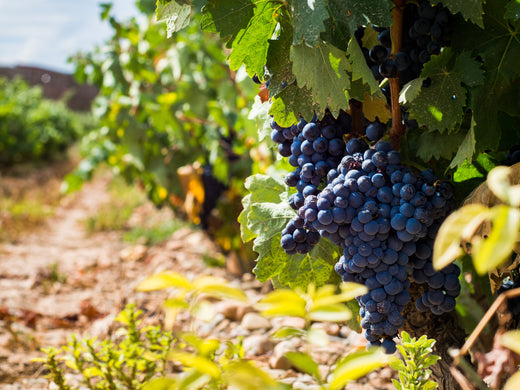
Tempranillo in South Africa A New World Perspective on an Old World Classic
Tempranillo is a grape that whispers tales of Spain’s sun-drenched vineyards, yet it’s finding a unique expression in South Africa’s diverse wine landscapes. For wine enthusiasts and sommeliers looking to expand their palate, understanding Tempranillo from South Africa offers a thrilling exploration into a rare varietal that blends Old World traditions with New World innovation. This post will guide you through the characteristics of Tempranillo, its rarity in South Africa, how it compares globally, and the delicious food pairings that can enhance your wine experience.
What Makes Tempranillo Unique
Tempranillo is a grape cherished for its versatility and depth. Known as the backbone of many Spanish wines, it offers a robust flavor profile characterized by deep cherry notes, herbal undertones, and a hint of tobacco. But what truly sets this grape apart is its chameleon-like ability to adapt and reflect the terroir of the region it grows in.
Tempranillo thrives in climates that offer hot days and cool nights, allowing the grape to develop complex flavors without losing its essential acidity. In Spain, it’s traditionally cultivated in regions like Rioja and Ribera del Duero, where the distinctive climate helps produce wines with notable aging potential. The grape’s thick skin contributes to its deep color and high tannin levels, which are crucial for creating wines that can mature gracefully over time.
In terms of winemaking, Tempranillo is known for its ability to absorb oak beautifully, often resulting in wines with notes of vanilla, toast, and spice when aged in barrels. This characteristic makes it a favorite among vintners looking to craft balanced wines that capture both fruitiness and depth, offering a sensory journey with every sip.
Tempranillo’s Rarity in South Africa
Tempranillo holds a significant place in the global wine industry, being the fourth most planted wine grape variety worldwide. Predominantly associated with Spain, where it serves as the backbone of many renowned wines, Tempranillo accounts for approximately 88% of all red wine varieties planted in the country. Globally, it is estimated that Tempranillo contributes to roughly 6% of the world's total wine grape plantings. This substantial presence highlights the grape's versatility and growing appeal, as winemakers in various regions experiment with its potential.
While Tempranillo is the star of Spanish vineyards, its presence in South Africa is much like a hidden gem waiting to be discovered. South Africa’s wine history is rich and varied, with a strong focus on varietals like Chenin Blanc and Pinotage. Introducing Tempranillo into this mix presents an exciting, albeit rare, opportunity.
While exact statistics can fluctuate, Tempranillo vineyards in South Africa occupy a relatively small niche, accounting for less than 1% of the country's total wine grape plantings. This limited cultivation emphasizes its rarity and potential as a unique offering within South Africa's diverse wine landscape. As a result, Tempranillo remains an intriguing option for South African winemakers seeking to diversify their portfolios and innovate beyond traditional varietals.
The rarity of Tempranillo in South Africa can be attributed to the country’s historical focus on other grape varieties and the relatively recent experimentation with international varietals. However, the country’s diverse climates and innovative winemakers are beginning to explore the potential of Tempranillo. The regions of Stellenbosch and Paarl, known for their versatile terroirs, are particularly promising for growing this Spanish grape.
South African vintners who have embraced Tempranillo are finding that it brings a fresh dimension to their offerings. The grape’s adaptability allows it to express South Africa’s unique terroir, resulting in wines that maintain the traditional characteristics of Tempranillo but with a distinct South African twist. These wines are still emerging in the market, making them an exciting find for any wine enthusiast.
Comparing South African Tempranillo to Global Varieties
Tempranillo’s expression varies significantly across the globe, influenced by regional climates, soil types, and winemaking practices. While Spain remains the benchmark for Tempranillo wines, South Africa offers a new perspective that’s worth exploring.
In Spain, Tempranillo wines are recognized for their elegance and complexity, often described as having earthy tones with a balance of ripe fruit flavors. The traditional aging process in American oak adds layers of vanilla and spice, contributing to the wine’s rich palate. Spanish Tempranillo is celebrated for its ability to age gracefully, developing more nuanced flavors over time.
Contrastingly, South African Tempranillo tends to emphasize fruit-forward notes with a fresher, more vibrant flavor profile. The South African climate contributes to a slightly different expression, often resulting in wines with brighter acidity and a zestier edge. This makes South African Tempranillo particularly appealing to those who appreciate New World wine styles, where fruitiness and vibrancy are often highlighted.
Comparing these two expressions of Tempranillo provides wine lovers with a chance to experience how terroir and winemaking techniques shape the same grape into unique wines. It opens up a dialogue about the influence of geography on wine, offering a deeper appreciation for the craft of winemaking.
Perfect Pairings with Tempranillo
Tempranillo’s acidity and tannins make it an excellent match for rich, flavorful dishes. Grilled meats, such as lamb chops or beef steaks, complement the wine’s structure and depth. The smoky flavors from the grill enhance the wine’s earthy undertones, creating a harmonious dining experience.
For vegetarian options, consider pairing Tempranillo with roasted vegetables or a hearty mushroom risotto. The wine’s fruitiness pairs well with the umami flavors in these dishes, while its acidity balances the richness, ensuring a satisfying meal.
Cheese lovers will find that Tempranillo pairs beautifully with a variety of cheeses. Opt for aged Manchego or a sharp Cheddar, both of which complement the wine’s robust flavors while adding their own depth to the tasting experience. A charcuterie board featuring cured meats and olives can also be a fantastic accompaniment, highlighting the wine’s versatility.
Explore our Tempranillo
Tempel Wines Tempranillo Tydsaam 2022 - Check it out.
